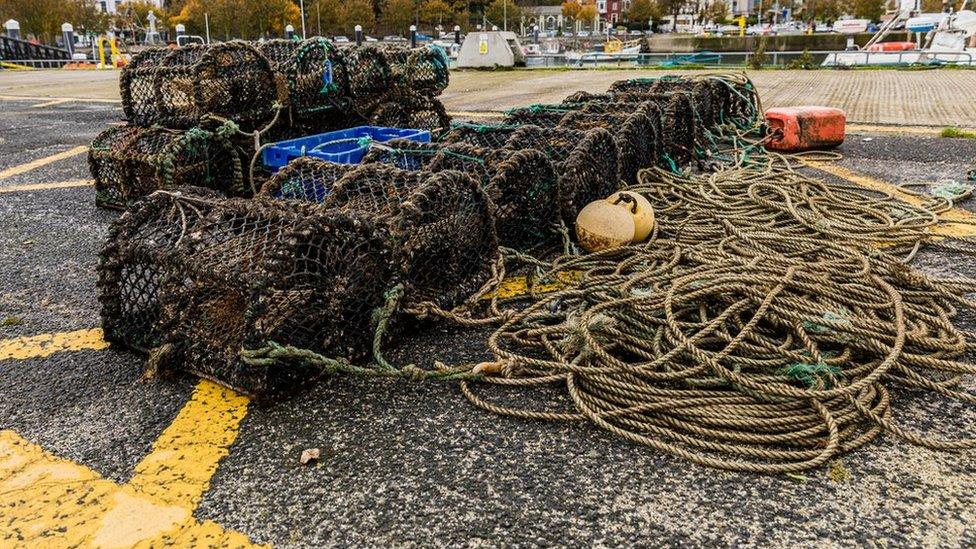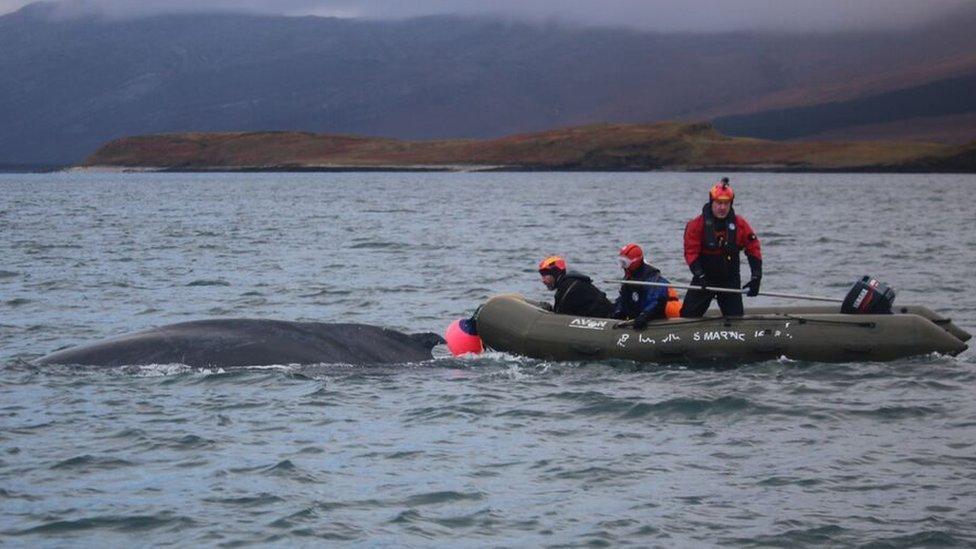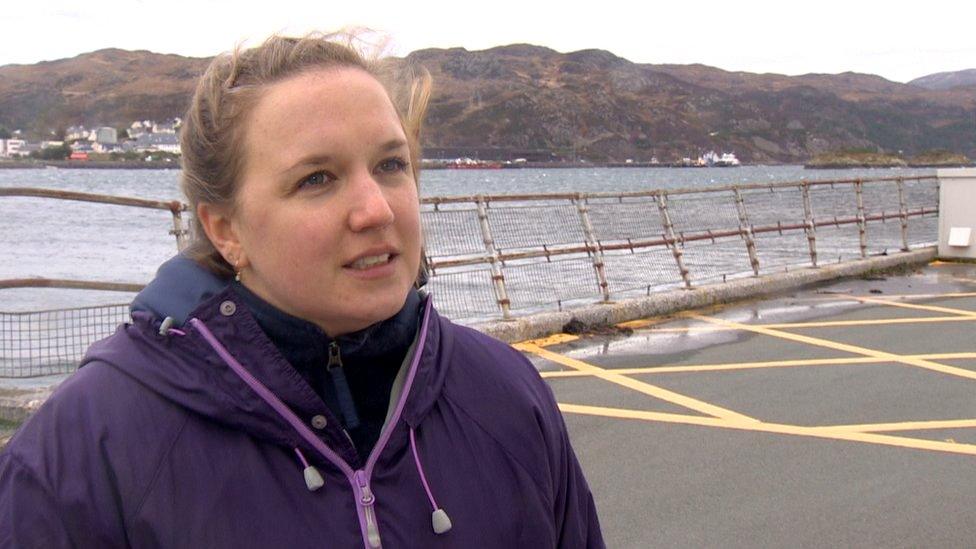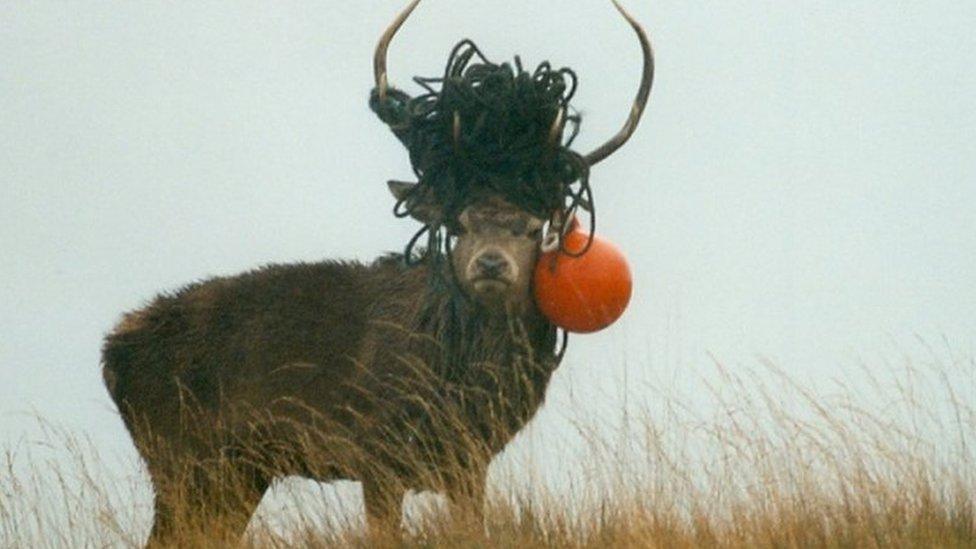Scottish tests of 'whale-friendly' fishing creels
- Published

Whales and other marine animals can become entangled in rope linking a fleet of creels to a buoy on the sea's surface
Fishing gear designed to protect whales from entanglement is being trialled off Scotland's coast.
Whales can become caught in rope that runs between shellfish creels on the seabed to a buoy on the surface.
The new "ropeless creels" have this main line in a container along with a buoy and these are lowered to the seabed with the creels.
The buoy is released electronically and rises to the surface, bringing the rope with it so the creels can be retrieved.
The technology is being developed initially for fisheries in the US and Canada where endangered North Atlantic right whales have died in entanglements.

Rescuers free an entangled whale in the Scottish Highlands
Those involved in the trials, including the Scottish Entanglement Alliance (Sea) - a coalition of conservation groups, rescue teams and fishermen - say Scotland's coast offers ideal conditions for testing ropeless creels.
Scientist Kim Sawicki, who is working on the US-EU funded research, said: "Right now a lot of fisheries are suffering closures both in the US and Canada due to entanglement issues with cetaceans, particularly the North Atlantic right whale.
"Fishermen are losing money and are not able to feed their families."
The researcher said creel fishing in the Gulf of Maine alone involved four million main lines.

Scientist Kim Sawicki is involved in the trials of ropeless creels off Scotland's coast
"A group of manufacturers have come together to design a system that stores the rope at depth so that it is not a risk to whale," she added.
Creel fishing usually involves lowering a fleet of 30 to 50 weighted-down pots to the seabed. The pots are strung together on rope and the last creel has a line going from it to a buoy on the surface.
The buoy aids in the retrieval of the creels, but also acts as a marker to other fishermen to where the gear is.
A fleet of creels can remain on the seabed for 24 hours, or longer if the bad weather hampers work to haul up the pots.

Ellie MacLennan, of Scottish Entanglement Alliance, said fishermen wanted to help to prevent entanglements
Bally Philip, a Kyle of Lochalsh-based creel fisherman working with the project in Scotland, said the project team was taking on board fishermen's suggested improvements to the ropeless system.
He said: "We use the buoy to see where the gear is, so we need to develop the corresponding tracking system and also a way of advising other fishermen to where the 'ropeless' gear is. All that has still to be developed.
"But there is a real urgency to develop this stuff because all around the world there are places where endangered species are getting entangled in fishing gear."
Scottish scientist Ellie MacLennan, of Sea, said the fishing industry was key to the solution to ending entanglement.
She said that in the past year in Scotland, there had been about 12 incidents of entanglements with two as classed as "chronic" due to the injuries caused to the animals involved.
She added: "Fishermen want to help. They work alongside these large animals and are devastated when an entanglement happens."
- Published12 January 2020
